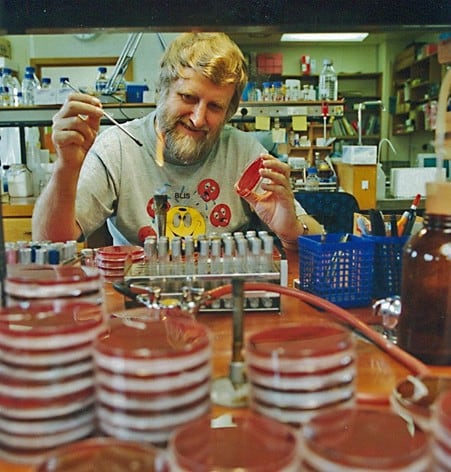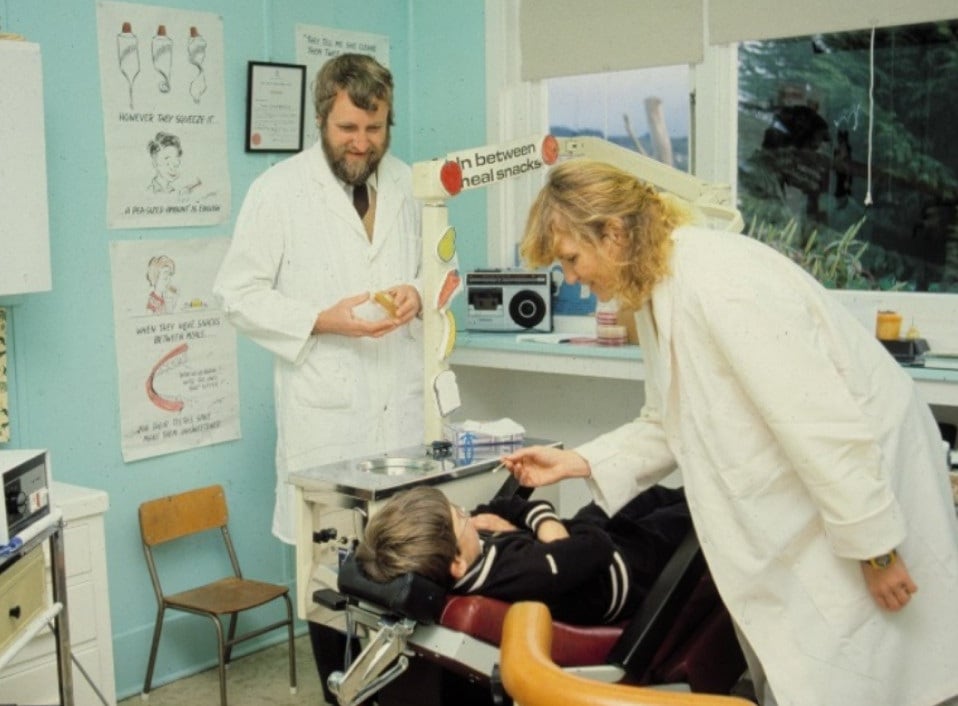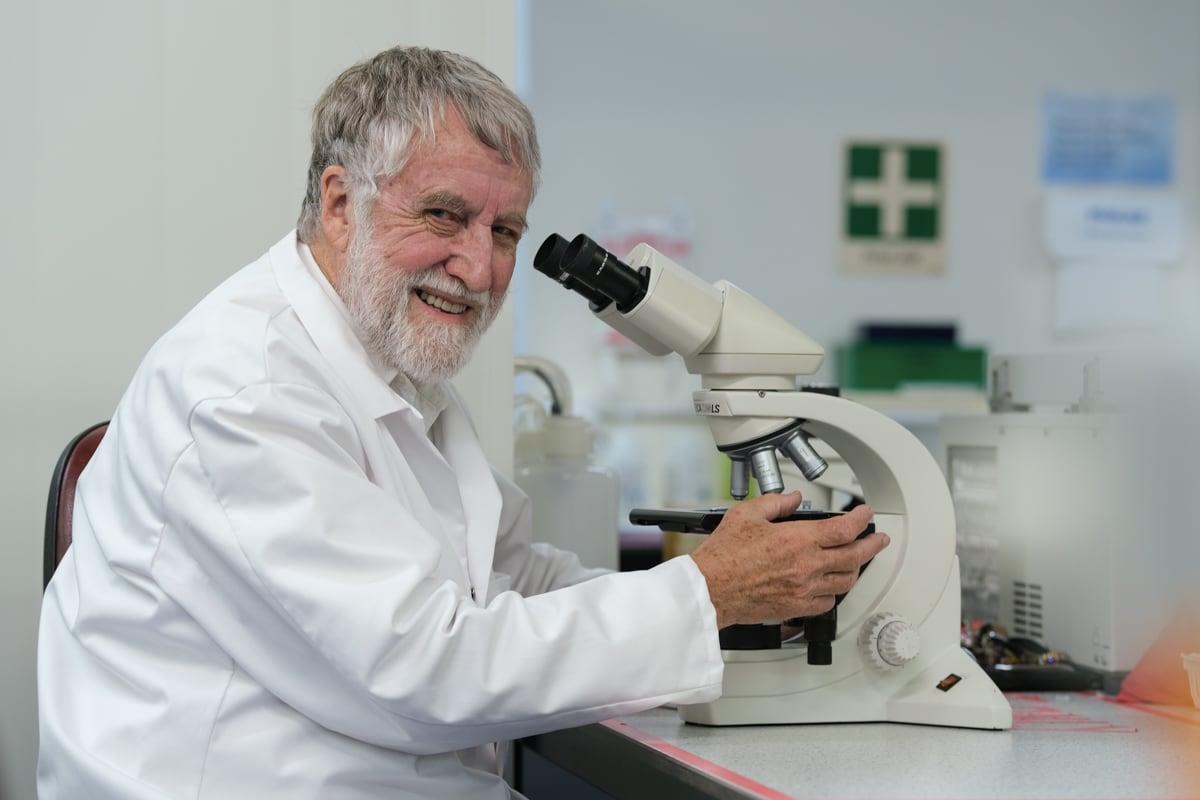The BLIS story begins with Professor Emeritus John Tagg, an Australian who suffered from strep throat throughout his childhood in Melbourne. Complications related to this led to an autoimmune disease called rheumatic fever. Subsequently, he was required to take prophylactic penicillin daily for 10 years to prevent any flare ups.
Dr. Tagg started exploring probiotic alternatives to daily antibiotics, a line of inquiry that led to a research career with Monash and Melbourne University in his hometown, then on to Minnesota in the United States before eventually settling at the University of Otago in Dunedin, New Zealand.
Realizing that there could be an opportunity in the oral cavity to use bacterial agonists to prevent the growth of other infection-causing bacteria, Dr. Tagg began mining the microbes from the mouths of local children for potential beneficial bacteria that could be probiotics.
The key to the beneficial bacteria (and also the company’s name) are antimicrobial substances called Bacteriocin-Like- Inhibitory Substances, or BLIS, that are produced by bacteria. The first and best BLIS-producing oral probiotic (Streptococcus salivarius K12) was isolated from an individual who did not seem to get many sore throats. Dr. John Hale, the company’s long-serving chief technology officer, undertook his PhD with Dr. Tagg and was in his laboratory when BLIS Technologies was founded in 2000. After postdoctoral studies in Canada and Australia, Dr. Hale returned to BLIS Technologies 14 years ago.
Establishment of a new probiotic (BLIS K12) for the oral cavity
Dr. Hale said the company worked to establish the safety of its probiotics in humans, which has led to regulatory approvals in multiple countries, and then moved on to demonstrate efficacy in clinical trials. For example, Italian studies showed a reduction in the reoccurrence of throat infections and tonsillitis by up to 90% in children (e.g., International Journal of General Medicine Therapy).
Another study reported an 80% reduction in episodes of strep throat in adult, and a 60% reduction in sore throat in the six months after using the product for 90 days.

Over the years, the science has expanded beyond the mouth, with data showing that BLIS K12 can induce a regulatory, anti-inflammatory peripheral immune response. Specifically, levels of the pro-inflammatory IL-6 decreased after BLIS K12 ingestion, while IL-12 levels increased seven days after ingestion of a single dose of BLIS K12, which may “suggest an ongoing activated immune response”, researchers from the University of Otago and BLIS Technologies reported in 2021 in Probiotics and Antimicrobial Proteins.
This was followed by a 2022 paper published in Frontiers in Immunology that reported a sports and active nutrition opportunity for BLIS K12, with data showing the probiotic may improve immune parameters in healthy people performing a high-intensity training (HIT) program.
Commenting at the time, Dr. Hale stated: “The study adds to the growing research on BLIS K12’s impact for immunity and upper respiratory support. Sports supplements are just one area that we can see great market potential for upper respiratory defense, as we look to work with partners to grow BLIS K12’s presence in this category.”
Diversification, establishment of an oral probiotic (BLIS M18) for dental health
With one eye on the U.S. market where teeth and gum health is a key driver for consumers, the company began to explore its library of strains for a probiotic that could support oral cavity tissue health. This led to the development of BLIS M18.
“Bringing a probiotic [to the market] for the mouth was new to the world,” Dr. Hale said.
Clinical substantiation for M18 has come from multiple trials over the years, with data showing that lozenges delivering the strain were associated with improvements in plaque scores, measures of gingivitis and gum bleeding, reductions in cavity-related risk factors in children and 75% reduction in bacterial species which are linked to development of cavities, as well as preventing the recurrence of the black stains on teeth after removal of professional cleaning.

“Originally BLIS M18 was developed for preventing dental caries,” Dr. Hale said. “That’s one of the most common diseases in the world, but it’s also a very slow disease to manifest clinically. Obviously most people, when they know they have a cavity, will go get a filling and move on. But BLIS M18 was also to assist gum health, and we’ve shown that we can control inflammation of the gums. We can control certain bad bacteria that live on the gums and then, going to a more mechanistic level, we have shown the reduction of certain virulence factors produced by those pathogens. If these get in your bloodstream they can cause systemic issues as well, like cardiovascular disease.
“That’s kind of where the science is going,” he said. “So, for BLIS M18 and you can see that the importance of it on your dental health and systemic health is becoming much, much clearer.”
Dr. Hale said that BLIS K12 is the company’s biggest seller, and BLIS has the most data for the probiotic strain, “but I think BLIS M18 its importance is growing and growing at a fast rate.”

Oral microbiome diversity
While academics are still debating what a healthy gut microbiome looks like, the mouth, which BLIS refers to as the gateway to the body, has a relatively well-defined microbiome.
“If you protect the gateway, hopefully you’re also protecting your body,” Dr. Hale said.
“We do know what a healthy oral microbiome should look like. I liken it to a small town or a city. You’ve got your good citizens, you’ve got your rogues, and then you’ve kind of got the ones that are good until they go bad. Like any sort of community, you have law enforcement. They try and keep things under control and that’s where I see the use of a probiotics like BLIS K12 and BLIS M18 as a kind of microbial police officer that help keep trouble makers in check.”
The mouth is fascinating because it is a collection of different atmospheres, he explained, with a slight anoxia [low oxygen] at the back of the mouth and far more oxygen at the front.
“You have the hard, shedding surfaces of the tooth plaque, and then you’ve got hypoxic pockets and the gums with no oxygen at all,” he added. “So, you’ve kind of got this diverse range of environments even within a very small space. Just by the sheer nature of that, you do have to have diversity of the microbes that have evolved to live in that space.”
The understanding of the oral microbiome has advanced significantly over the past decade, Dr. Hale noted, and the technology to help us understand the oral microbiome has become better, faster and cheaper. The competitive landscape is also evolving, with some companies repurposing gut probiotics for use in the oral cavity, and others following BLIS’ lead and exploring probiotic candidates specifically isolated from the mouth.
BLIS Technologies has also branched out beyond the oral cavity, launching a skin probiotic in 2021 called BLIS Q24 (Micrococcus luteus strain BLIS Q24), supported by a clinical trial published recently in the International Journal of Cosmetic Science, but the company remains dedicated to being a pioneer of oral probiotics.
“John Tagg has collected 35 years’ worth of strains from people’s mouths, so we have a large, large freezer full of oral bacteria waiting for their time in the sun,” Dr. Hale said.





